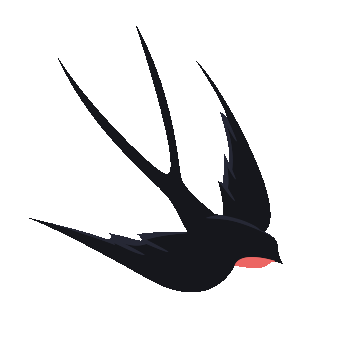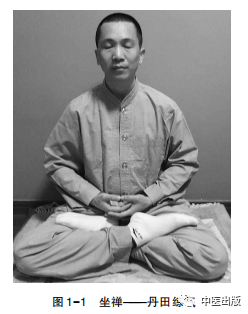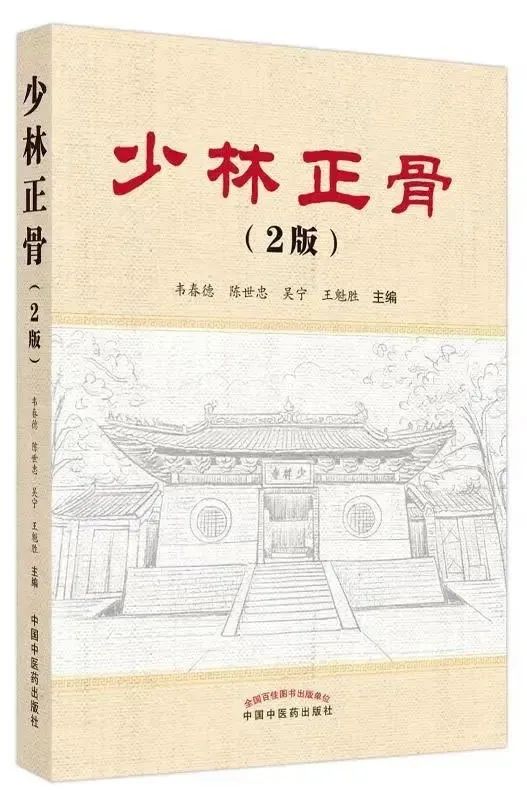Editor’s Introduction
Qigong training focuses on nourishing and cultivating Qi. When Qi is nourished, it becomes still; when Qi is still, the spirit is clear. With a clear spirit, one can maneuver appropriately. Cultivating Qi requires diligence in body movement. The method of body movement begins with Ma Bu (standing meditation), followed by the stretching and contracting of the body. Next is breathing, which involves long inhalations and short exhalations, with the Qi held in the Dan Tian, practiced regularly. Below, I will provide a detailed introduction.

In Shaolin Qigong, the methods of Dan Tian circulation and bone penetrating techniques are commonly used. The training method for sitting meditation is as follows. Sitting meditation, also known as “wall-gazing meditation,” is most famously transmitted by the Zen Master Bodhidharma of Shaolin Temple, and is referred to as “Zen Buddhism” in the Buddhist community.
Bodhidharma advocated for “silent cultivation” as the foundation, with all thoughts empty, clarity of mind, and achieving “external cessation of all distractions, internal calmness, with the mind like a wall.” “Sitting meditation” is the foundation of Shaolin martial arts, and through practice, it plays an important role in harmonizing the Qi channels, strengthening the internal organs, and ensuring smooth meridians to nourish the innate essence.
Dan Tian Qigong — Fire Pearl Training Method
Method: Sit facing south with your back to the north, relax your entire body, keep your head and body upright, and slightly close your eyes, “internally illuminating the Dan Tian.” Keep your mouth naturally closed, teeth together, and the tip of your tongue curled lightly against the upper palate. Bend your left leg, with the lower leg inward, placing the top of your foot on your right thigh, the sole facing up, and the heel pressed against the root of your right thigh. Bend and raise your right leg, with the lower leg inward, placing the foot on your left thigh, the sole facing up, and the heel pressed against the root of your left thigh, crossing your legs in a seated position.
At the same time, keep both arms relaxed and hanging, with the wrists and arms lightly resting on both thighs, stacking your palms, with the right palm on top and the left palm below, palms facing up (in ancient methods, the tip of the thumb is tucked into the base of the ring finger, or the right hand is in a fist with the middle and ring fingers pressing against the palm at the “Lao Gong point,” also known in practice as “grasping firmly” or “pinching the seal” etc.). See the image.

Image: Sitting Meditation — Dan Tian Qigong
Mind and Breathing: During practice, focus your mind on the “Dan Tian,” “concentrating the spirit in the center” (the “Dan Tian” referred to here is located in the lower abdomen, approximately 5 cm below the navel). At this time, all joints and muscles should be fully relaxed, everything should follow nature, maintaining internal tranquility. As long as you can gently rise and fall with the abdomen, accompanied by even, gentle, and slow natural breathing, this is known as “intentionally guarding within.” The practice of “mind guarding” is to concentrate your thoughts entirely on the “Dan Tian,” replacing myriad thoughts with a single thought, eliminating distractions, achieving a tranquil mind, and entering a comfortable state.
“Dan Tian” is the root of life, the gathering place of vital energy, and the source of internal Qi activation. Therefore, to gradually enhance the effectiveness of “guarding the one,” during mind guarding, it should feel like guarding yet not guarding, being both near and far, with the intention being light rather than heavy. In other words, avoid overly intense focus on the “Dan Tian.” If the intention is forced or too intense, Qi may become excessively concentrated in the “Dan Tian,” leading to a feeling of Qi swelling in that area. If one continues to forcefully guard, it may result in abdominal pain, bloating, and erratic movements of the mind and breath, which would be counterproductive to health.
Thus, we advocate that during practice, the intention should not be too intense, avoiding “attachment,” especially as one reaches a certain level, the lighter the intention, the better, to gradually achieve the so-called state of “neither here nor there, seeming intention yet not intention, tranquil and void.” This is the state of practice where one is neither too close nor too far, to avoid issues like drowsiness or loss of control. During practice, correctly mastering the principle of “purely natural” breathing is particularly important. The comfort achieved in this tranquil state is difficult to describe in words.
Once the practice reaches the aforementioned state, one can adopt the method of “cessation of breath” for practice. At this time, visualize with your mind, gazing at the nose, observing the “Dan Tian,” or using both eyes to focus on the “Dan Tian” area, connecting the nose and “Dan Tian” in a straight line. Through this method of connecting the vertical line, it can effectively assist and induce “entering tranquility,” achieving a state of forgetting breath and stopping breath (internal breathing). This state is very beneficial for nourishing the nervous system. After a period of practice, one will gradually feel clarity of mind, relaxation, tranquility, and warmth or coolness in the body or specific areas, indicating that the internal Qi has begun to activate, which is a normal response in the early stages of practice.
At the same time, one may feel lightness in the limbs, a tranquil mind like spring water, thoughts light and slow, merging into a state of “meditative absorption,” where the body seems to cease to exist, leading to a state of void and “forgetting oneself,” which is the unity of spirit and Qi. This is due to the increasing duration of tranquility during practice, with deepening awareness, leading the cerebral cortex into a special, relatively inhibited state. The formation and consolidation of this “cessation” state produce beneficial effects on the meridians, Qi and blood, and internal organs, resulting in various sensations within the body or on the surface, such as movement, itching, coolness, warmth, heaviness, lightness, roughness, smoothness, heat, floating, sinking, etc. In ancient times, this phenomenon was referred to as obtaining “essence Qi” or “true Qi.”

During practice, one may also experience a sensation similar to an electric current, flowing through the meridians and acupoints throughout the body and reaching the extremities. The various effects in the tranquil state are referred to in ancient times as “Qi flow” and “stillness leading to movement,” which are normal phenomena.
Of course, some individuals may also experience various hallucinations during practice, such as seeing light spots or various scenes and illusions. At this time, there is no need to be nervous or fearful (thinking that one has deviated in practice), and one should not intentionally pursue these experiences, but rather calm down, ignore them, and remain relaxed.
At the same time, mind guarding should not be “attached” or forced; it should be light and gentle, seeming to exist yet not exist. Ancient practitioners deeply understood this, advocating that “one should not use the mind to guard, nor seek without intention; using the mind to grasp the form, without intention leads to emptiness, seeming to guard yet not guarding, soft and gentle as if it exists.”
If excessive “movement” occurs and becomes uncontrollable, one can focus on the “Yong Quan point,” and the symptoms will gradually subside. The methods introduced in this article, when practiced to the highest level, will lead to the gradual disappearance of both internal and external “movements,” restoring the original quiet, stable, and tranquil state of void absorption. The restoration and formation of this state, compared to before, is merely a difference in degree and skill.
With both knees crossed, hands stacked near the Dan Tian. Relax the whole body, following nature.
Keep the body upright, tongue curled upwards. Ears feel empty, eyes like hanging curtains.
Observe the spirit concentrated, heart and breath connected. Listen inwardly, Qi circulates in the Dan Tian.
During sitting meditation, the “Qi” of Qigong generally runs internally. Due to individual differences in the activation of internal Qi, if one practices correctly and diligently, the Qi and blood within can circulate normally and rhythmically, nourishing the entire body, gradually benefiting health and prolonging life. Conversely, improper practice may lead to deviations, discomfort, Qi stagnation, or disturbances to the nervous system, which are detrimental to health, and thus, it is even more difficult to discuss the prevention and treatment of diseases and the internal nourishment of essence, Qi, and spirit.
Therefore, it is essential to correctly grasp the objective laws of the practice and follow the principle of gradual progression. With the accumulation of time, the practice will advance and deepen.
At this stage, it is also crucial to pay attention to the principle of “nourishing skill with skill.” For instance, after the Qi and blood become vigorous, if the internal Qi runs irregularly, not following the normal meridian pathways, or if certain “movements” occur, and timely adjustments are not made, on one hand, it will be difficult for the practice to deepen, and on the other hand, the corresponding fear may lead to chaotic Qi flow.
Mencius said: “I am good at nourishing my vast Qi.” This means that practice must be done well, and one must also be good at nourishing, to cultivate essence, Qi, and spirit, and maintain tranquility. After reaching a certain level in practice, when the internal Qi is abundant and accompanied by the sensation of Qi flow, one can combine breathing exercises guided by consciousness.
The so-called “guiding” method helps the internal Qi to run in a certain direction and pathway, enhancing the sitting meditation practice. The guiding practice can adopt reverse breathing (i.e., during inhalation, the abdomen naturally retracts with the intention of “guiding,” and during exhalation, the abdomen expands with the intention of “guiding”). After entering tranquility in practice, the “Dan Tian” gradually becomes warm, and when it reaches a certain level, this “Qi” can be visualized as a “fire pearl.”
Recommended Reading

“Shaolin Bone Setting (2nd Edition)”
Click on the cover to enter the Yuyijia TCM Bookstore to purchase this book.
Content Introduction
This book is written based on the original thinking and main techniques of traditional Chinese medicine in the field of bone injuries, and is the first monograph on TCM bone injuries titled “Shaolin Bone Setting.” The author introduces the training methods of Shaolin skills that bone setting practitioners must possess, based on the technical requirements of traditional Shaolin bone setting, which focuses on manual repositioning. It emphasizes the application of Shaolin bone setting techniques combined with Western medical anatomy and imaging, summarizing clinical techniques for the diagnosis and treatment of 19 common fractures and dislocations accumulated over 50 years of practice. It explores and organizes the unique acupoint treatment methods and herbal therapies of Shaolin bone injuries. The book is richly illustrated and is a clinically practical monograph with distinctive TCM features, holding significant practical significance for the inheritance and promotion of TCM bone setting techniques that are on the verge of being lost.
This reprint adds case examples and X-ray photos before and after repositioning, and includes the inheritance of Shaolin culture from the Pingnan Tong’an Bone Injury Hospital in Guangxi and two provincial-level intangible cultural heritage listings in the appendix.This book can serve as a reference for clinical, research, and teaching for practitioners in the field of bone injuries.
❖This article is for knowledge sharing only and does not constitute a recommendation or promotion of any medication or treatment, nor can it replace professional medical advice. For any medical needs, please consult and contact a legitimate medical institution. Previous Recommendations
One herb for rapid relief of throat swelling and pain
How to start learning TCM
What is the secret to happiness? Color psychology reveals how emotions affect our lives
Copyright Statement
This article is excerpted from “Shaolin Bone Setting (2nd Edition),” (published by China Traditional Chinese Medicine Press, authored by Wei Chunde), reprinted from the “Traditional Chinese Medicine Publishing” WeChat public account, with all rights reserved by the original author, published by Yue Du TCM (WeChat ID: ydzhongyi). The cover image is sourced from the photography network, with copyright belonging to the original author. If there is any infringement, please contact for deletion. Unauthorized reproduction is prohibited!
✦ Reviewed by: Liu Zhe, Hu Jialin
✦ Typeset by: Bai Jialu
✦ For reprints, submissions, and collaborations: 2686566100 (QQ number)
 Click“Read the Original Text” to purchase the recommended book in this article
Click“Read the Original Text” to purchase the recommended book in this article Share
Share Collect
Collect Click
Click View
View

